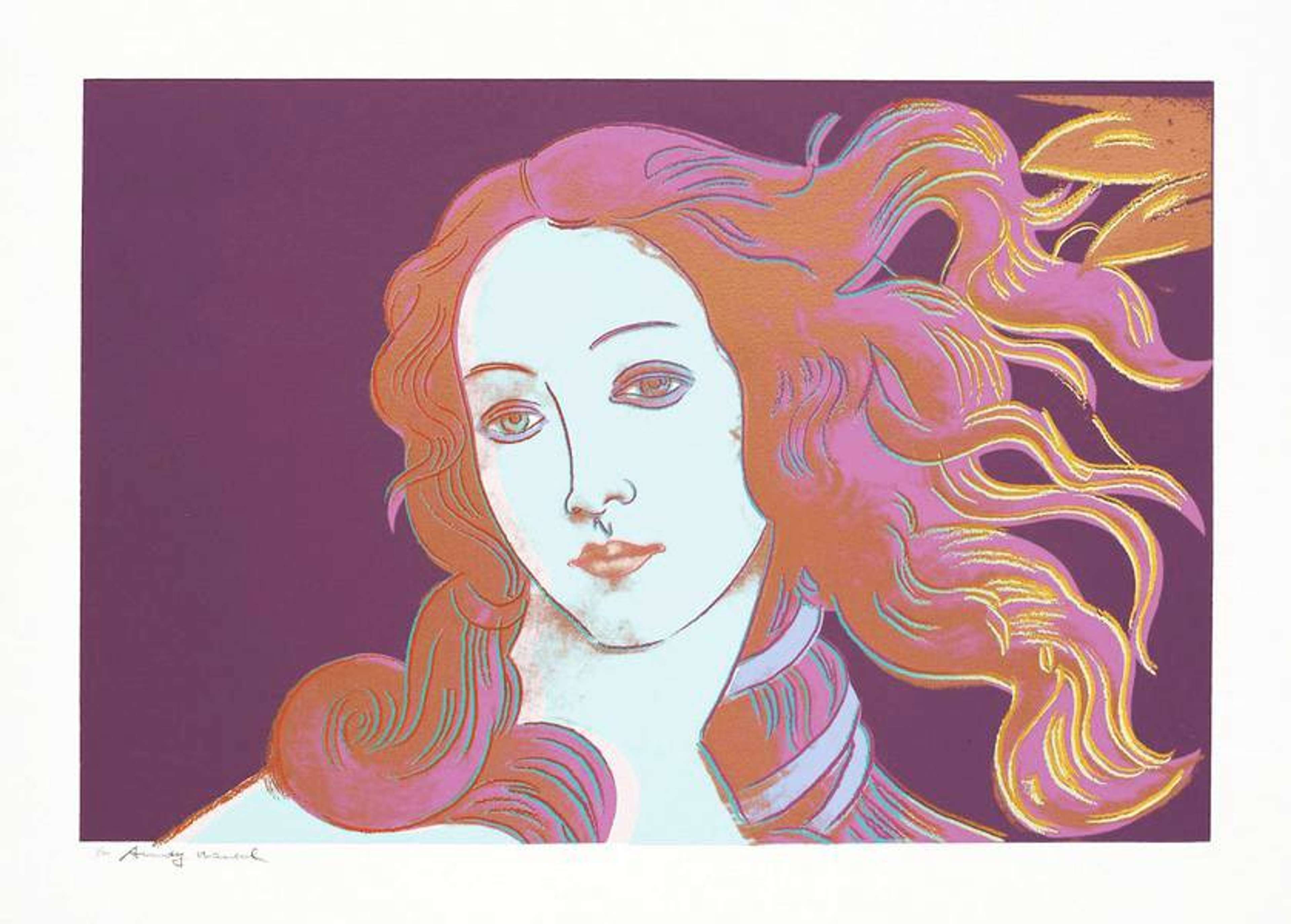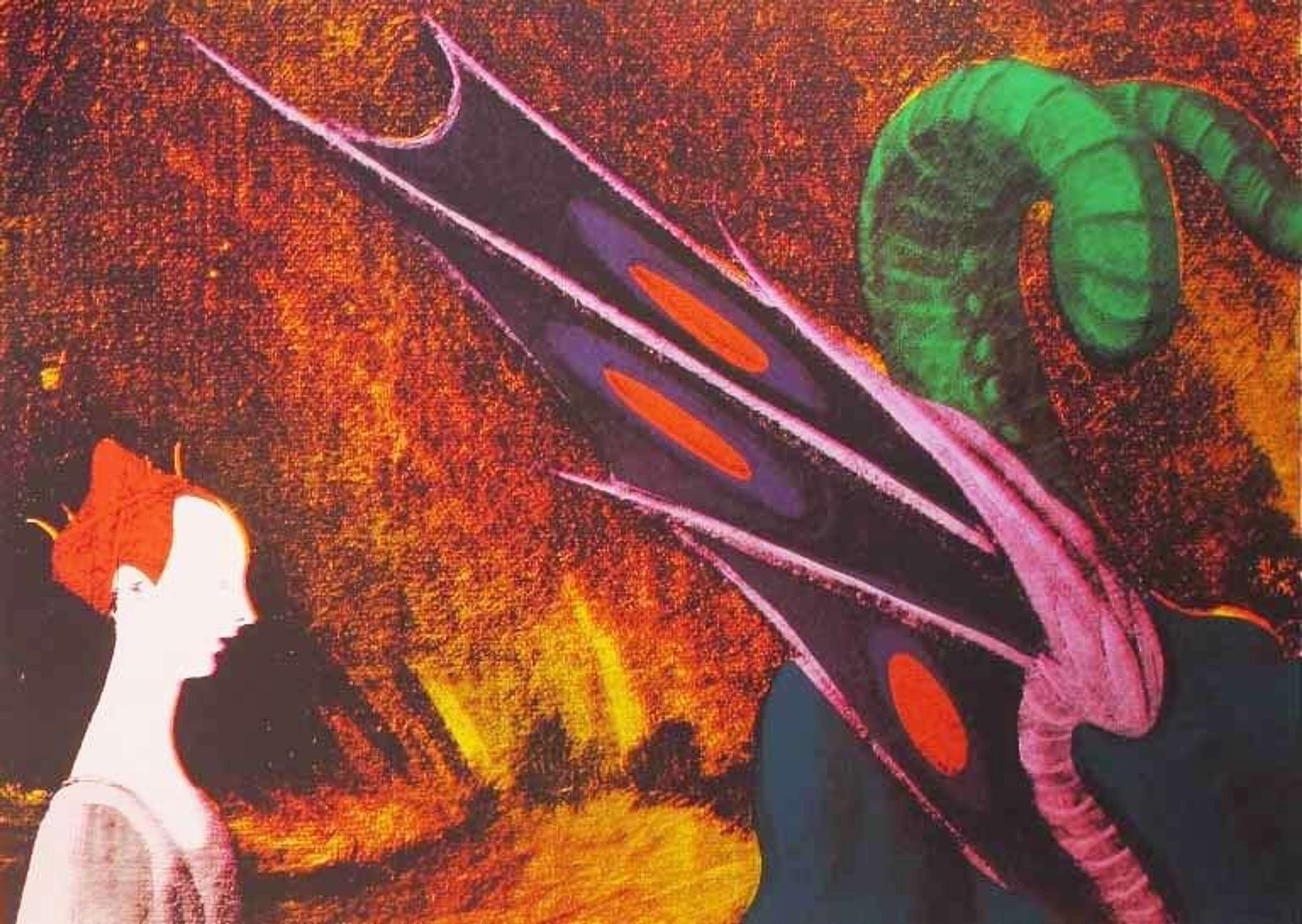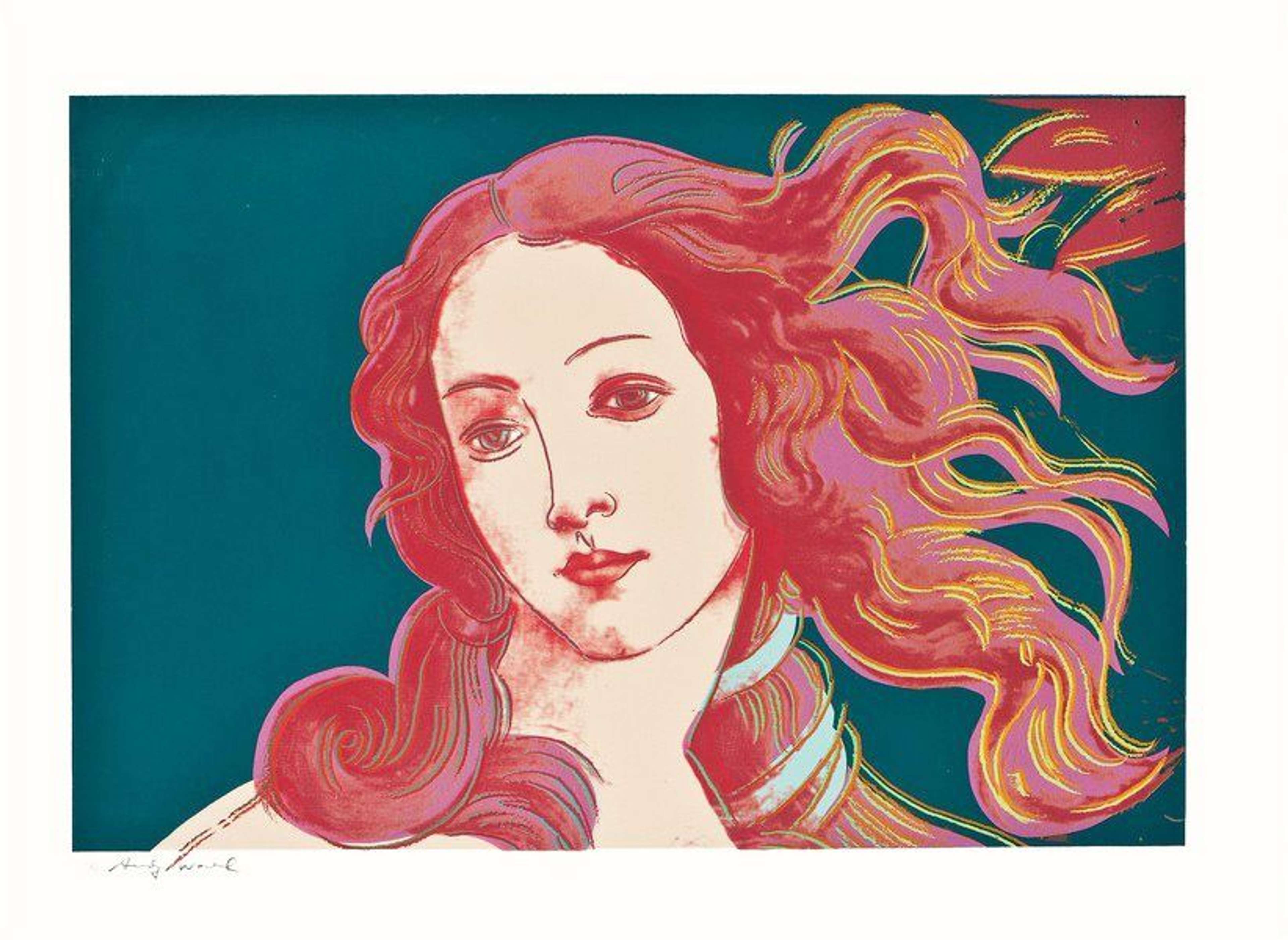10 Facts About Andy Warhol's Renaissance Paintings

 Details Of Renaissance Paintings (Sandro Botticelli, Birth Of Venus, 1482) (F. & S. II.319) © Andy Warhol 1984
Details Of Renaissance Paintings (Sandro Botticelli, Birth Of Venus, 1482) (F. & S. II.319) © Andy Warhol 1984
Interested in buying or selling
Andy Warhol?

Andy Warhol
487 works
Though Andy Warhol is remembered for his portraits of glamorous celebrities and the everyday products of modern consumerism, Renaissance Paintings reveals his fascination with art history. The series focuses on iconic imagery and artists regarded as 'Old Masters', a status Warhol himself seemed to strive towards.
Renaissance Paintings reveals Warhol's fascination with art history.
 Details Of Renaissance Paintings (Sandro Botticelli, Birth Of Venus, 1482) (F. & S. II.318) © Andy Warhol 1984
Details Of Renaissance Paintings (Sandro Botticelli, Birth Of Venus, 1482) (F. & S. II.318) © Andy Warhol 1984Though Warhol typically represented the most memorable faces and brands of his age, he also sought inspiration from art history. Renaissance Paintings cements Warhol's fascination with, specifically, Italian Renaissance artists. In particular, Warhol appropriated the works of Paolo Uccello, Sandro Botticelli and Leonardo da Vinci.
Warhol's fascination with the Old Masters began with da Vinci's Mona Lisa.
 Image © Christie's / Coloured Mona Lisa © Andy Warhol 1963
Image © Christie's / Coloured Mona Lisa © Andy Warhol 1963In the formative years of his artistic career, Warhol developed his now-iconic method of screen printing, a method which would come to shape the Pop Art movement. One of the first subjects he depicted through screen print was da Vinci's Mona Lisa. This multi-coloured, repeated image of da Vinci's 'masterpiece' satirises authenticity, and makes the viewer question the cultural importance and monetary value we attribute to so-called 'Old Masters'.
The series proves that art is a commodity.
 Details of Renaissance Paintings (Paolo Uccello St George and the Dragon 1460) (F. & S. II.327) © Andy Warhol 1984
Details of Renaissance Paintings (Paolo Uccello St George and the Dragon 1460) (F. & S. II.327) © Andy Warhol 1984By reproducing infamous Old Master works in screen prints, like a commercial printing press, Warhol showed that art itself is yet another commodity. Like the images of celebrities printed and disseminated for mass media, Warhol could appropriate, alter and mass-produce Old Master works from art history. Through his speedy, factory-esque approach, Warhol reduced these Renaissance Paintings to the same status as a tin of Campbell's soup.
The Annunciation prints reimagine da Vinci's biblical scene.
 Details Of Renaissance Paintings (Leonardo Da Vinci, The Annunciation, 1472) (F. & S. II.322) © Andy Warhol 1984
Details Of Renaissance Paintings (Leonardo Da Vinci, The Annunciation, 1472) (F. & S. II.322) © Andy Warhol 1984As with all his Renaissance Paintings prints, Warhol cropped a specific element from da Vinci's The Annunciation, focusing on the two hands reaching across the composition and the landscape in between them. Through layering and re-printing, Warhol gave this infamous oil and tempera work a graphic appeal.
Warhol transformed Botticelli's Venus into a "superstar".
 Details Of Renaissance Paintings (Sandro Botticelli, Birth Of Venus, 1482) (F. & S. II.317) © Andy Warhol 1984
Details Of Renaissance Paintings (Sandro Botticelli, Birth Of Venus, 1482) (F. & S. II.317) © Andy Warhol 1984By cropping Botticelli's The Birth Of Venus, Warhol focused on her demure portrait and windswept hair alone. Though Warhol's portrait appropriates a c.1485 painting, Venus is modernised to appear like one of his "superstars", joining the ranks of Marilyn Monroe, Liz Taylor, and Grace Kelly.
The series is typical of Warhol's later work.
 Details Of Renaissance Paintings (Leonardo Da Vinci, The Annunciation, 1472) (F. & S. II.320) © Andy Warhol 1984
Details Of Renaissance Paintings (Leonardo Da Vinci, The Annunciation, 1472) (F. & S. II.320) © Andy Warhol 1984Towards the end of his life and career, Warhol increasingly turned to subject matter which wasn't hot off the press. Renaissance Paintings is just one example of his later oeuvre, alongside Cowboys And Indians and Beethoven.
Warhol's cropping and colour alters the original narrative of the original Renaissance paintings.
 Details Of Renaissance Paintings (Paolo Uccello, St. George And The Dragon, 1460) (F. & S. II.326) © Andy Warhol 1984
Details Of Renaissance Paintings (Paolo Uccello, St. George And The Dragon, 1460) (F. & S. II.326) © Andy Warhol 1984By appropriating the 'details' of these famous Renaissance Paintings and distorting their colour palettes, Warhol transformed their meaning. His reworking of Uccello's St. George And The Dragon, for example, altered a once chaotic painting into a relatively tranquil scene.
The series speaks to Warhol's fascination with icons.
 Details Of Renaissance Paintings (Sandro Botticelli, Birth Of Venus, 1482) (F. & S. II.316) © Andy Warhol 1984
Details Of Renaissance Paintings (Sandro Botticelli, Birth Of Venus, 1482) (F. & S. II.316) © Andy Warhol 1984Renaissance Paintings is a testament to Warhol's obsession with icons and stardom. Indeed, each of the paintings and the artists that created them are considered as epochal in the history of art. Warhol's appropriation and reproduction of their work proves their stature in the art world, and his own respect for Old Masters.
The series makes us question the distinctions between 'high' and 'low' art.
 Details Of Renaissance Paintings (Leonardo Da Vinci, The Annunciation, 1472) (F. & S. II.321) © Andy Warhol 1984
Details Of Renaissance Paintings (Leonardo Da Vinci, The Annunciation, 1472) (F. & S. II.321) © Andy Warhol 1984With his bold and unnatural colours, graphic outlining and cropping of these Renaissance Paintings, Warhol called into question what we deem as 'high' art, versus the lowly art of printmaking. Like Pop Art itself, the series satirises the tradition and materiality that underscores 'fine art'.
Warhol recognised himself as a modern master.
 Details Of Renaissance Paintings (Sandro Botticelli, Birth Of Venus, 1482) (F. & S. II.319) © Andy Warhol 1984
Details Of Renaissance Paintings (Sandro Botticelli, Birth Of Venus, 1482) (F. & S. II.319) © Andy Warhol 1984Warhol reproduced and reimagined his Renaissance Paintings with precision and ingenuity, and therefore placed himself in this lineage of 'master' artists. Like his Renaissance predecessors, Warhol too was considered a celebrity artist in his own time, and has had an enduring influence on art and culture since his death in 1987.